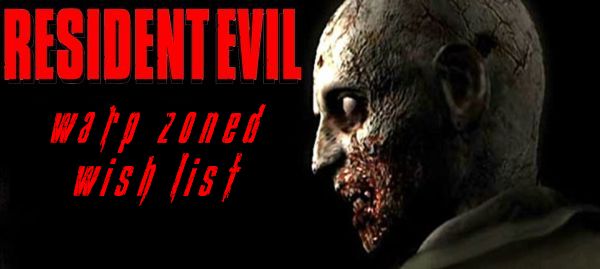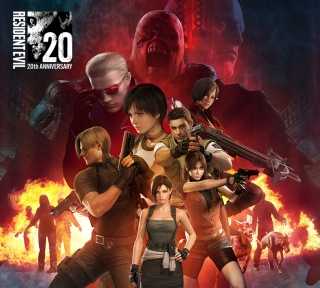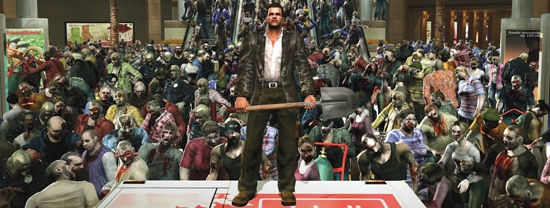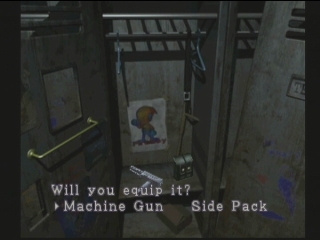
Everyone has their favorite game, and with sequels being as plentiful as they are, there’s a good chance that game is part of a long-running series. The first game was probably great, and maybe the second was even better– but the series will inevitably go off the rails as the sequels and spinoffs pile up. As a fan, it’s easy to see things from one perspective and say we know the best way to return a faltering franchise to its former glory, but now it’s time to prove it.
Today, I’ll be rambling about my own personal favorite series, Resident Evil, the former gold standard for what a survival horror game should be. The scares peaked with a GameCube remake of the original game, before giving way to the more action-oriented Resident Evil 4 shortly thereafter. Things then came to an unfortunate head with Resident Evil 6— a bloated mess of badly-written, non-linear storytelling; Michael Bay-esque action set pieces; and over-complicated gameplay good only for co-op.
Resident Evil 7 is expected to be announced at this year’s E3 Expo, but how can Capcom best resurrect the series? Simple! Take it back to its B-movie roots, and more importantly, bring back the actual horror. What does that mean, you ask warily? Well…
Reboot(ish)
 Most people see the rich, complicated story of this series as a convoluted mess– but that’s not true at all. The Resident Evil games make you work for the plot, picking out important details from files left hidden in the night. Only the most hardcore of gamers are willing to build a full timeline inside their heads, and that’s totally fine! However, as the story carried over into several spinoff series across multiple platforms, direct-to-DVD CGI films set within the continuity, manga, comics, and even a stage play– things are looking a little bit bloated.
Most people see the rich, complicated story of this series as a convoluted mess– but that’s not true at all. The Resident Evil games make you work for the plot, picking out important details from files left hidden in the night. Only the most hardcore of gamers are willing to build a full timeline inside their heads, and that’s totally fine! However, as the story carried over into several spinoff series across multiple platforms, direct-to-DVD CGI films set within the continuity, manga, comics, and even a stage play– things are looking a little bit bloated.
So the first step must be to simplify it. That doesn’t mean the total eradication of this ongoing saga– in fact, things are set up quite nicely as-is. We just need a new perspective on things, and as much as it pains me to say it, that means the regular cast of rotating protagonists needs to be retired.
Hear me out! We know Chris Redfield will continue his crusade until the day he dies, his resolve now bolstered after the events of RE6. His sister, Claire, has seemingly ditched the pacifist’s path for a more proactive approach to combating bio-terrorism. Barry Burton made his grand return and received a badass send-off, while Leon and Ada seem poised to continue their Batman/Catwoman dance until the end of time. RE6 filled us in on Sherry Birkin’s life, and also revealed a new wandering hero in the form of Albert Wesker’s son. The stage play even brought Rebecca Chambers back into the fold for a status update! These characters had their time in the spotlight, and don’t really need to return. We may not know Jill’s current condition following RE5, or the whereabouts of characters such as Carlos, Billy, Raymond, or Sheva– but those are worthy sacrifices to steer things back on course.
We need new blood, and not trained combatants like we’ve had up to this point! We need someone more along the lines of Moira Burton, introduced recently in Resident Evil Revelations 2. Not her ridiculously foul mouth, but her perspective as an average teen in a world where terrorists use terrible viruses in place of bombs. In fact, Revelations 2 had several characters like this, including Claire’s TerraSave team, who found themselves caught up in a splinter of the overarching plot of the series. In my hypothetical Resident Evil 7, things would be more streamlined.
Don’t Lose the Plot
Step one, no conspiracies! Seriously, Capcom, stop it. Double agents, triple agents, brainwashed protagonists used as superpowered weapons, spies of all shapes and sizes– in the immortal words of Uncle Joey, CUT. IT. OUT. Just create a tale of survival. A scenario to bring chills down anyone’s spine, with odds that are clearly stacked against the unprepared heroes. Umbrella Corporation’s viruses have been let loose in the dangerous Black Market, where anyone can buy them. Things don’t need to be more complicated than that basic premise, already established in previous games.
Where should this story be set? I’m glad you asked! Except… I don’t know. Capcom has exhausted all of the usual go-to spots, like mansions, castles, creepy villages, ancient temples, apocalyptic cities, and even ocean cruise liners (several times!). But someplace that is very much part of the modern world is ideal, I think. A place that is both familiar, and also has an old-world aesthetic with beautiful architecture. Sitting here at my keyboard, London comes immediately to mind… but what about Rome? Hmm…
So, we’ve got a place where locals and tourists from all walks of life could congregate. That lends itself well to a diverse cast, with everyone bringing something unique to the table, each with backstories of their own and easily-discernible personality traits to return some humanity to the series. Chris Redfield may be my favorite character, but I can’t exactly relate to him. The guy is basically a boulder-punching Spartan at this point– Captain America without the fancy vibranium shield. Introduce a video game blogger with a weight problem, though, and you’ve got my attention.
But what of the story’s villain? What catastrophe erupts to find our cast in peril? I’ll tell up front, I want it to be zombies. Zombies, zombies, ZOMBIES!!! They may not be a threat for seasoned BSAA operatives, but average joes will find them terrifying as hell. Ideally, nothing more complicated than a Cerberus hound should show up.
As for the villain, he or she shouldn’t have a grand agenda. They aren’t interested in becoming a God, nor achieving COMPLETE. GLOBAL. SATURATION. No, this person is a straight-up anarchist– someone with nothing better to do than causing the deaths of millions of people. What’s more terrifying than that? Perhaps they operate alone, or maybe there’s a small group of like-minded people who carried out the game’s central attack. They should act less like a cult, and more like the mysterious members of Anonymous. Regardless, it should be a small-scale act with devastating impact.
Until this point, I’ve been dancing around my thoughts on the most important aspect of the game. Well, it’s time to talk about…
Gameplay
Remember our ragtag selection of average joes? Our heroes with select skills, but no real offensive capabilities? That choice is for a reason. This isn’t RE6, or RE4– hell, it isn’t even REmake! What I’m proposing is more along the lines of Until Dawn. This Resident Evil 7 would be driven by its narrative, but would also feature a much more involved set of gameplay mechanics than Until Dawn offered. Impromptu weapons can be found in mostly logical places, like Dead Rising, but their use should vary. A handheld rock may last until the end of the game, but a wooden plank would eventually break. Consider those the basic rules.

Just as the original Resident Evil was largely inspired by Sweet Home, Alone in the Dark, and countless other games before its arrival, this hypothetical Resident Evil 7 would be inspired by Until Dawn’s horrific tale. Take the bones of a game that worked well, and expand upon its offerings. That’s a no-brainer.
Limited combat prowess for the main characters means that even the basic zombie can be terrifying again. There’s a reason they were ditched starting with RE4– in a game with multiple weapons and free aim, even the largest cluster could be put down with easy headshots.
Without a robust armory to work with, the undead suddenly regain their intimidating presence– and something as simple as a Cerberus could once again bring players to the verge of a heart attack. If Capcom dared to bring back the dreaded Crimson Heads as well, things would only get more intense.
I also want to see the return of defensive items from the Resident Evil remake. If you aren’t aware, these were one-time-use items hidden around the Spencer Mansion. They came in the form of daggers, batteries for Jill’s stun gun, and a flash grenade Chris could shove into the mouth of a zombie– and using them allowed you to escape when grabbed by a ghoulie. With the limited number of zombies in that game, these items kind of made things easy– but if Capcom were to bring them back in a game with hordes of zombies, they wouldn’t feel so overpowered. It would simply allow players to correct a single misstep, while being that much more alone afterward.
Puzzles should also make a grand return, but not quite as you’d expect. Our anarchist(s) will have tried to cause as much mayhem as possible, finding ways to block exits, cut off access to most buildings, and cripple the police force. It’s up to Capcom to create specific scenarios, but one possible mission could see players gathering items to try building a pulley system, all to relocate a downed tree (or other debris) from their path. As there’s no fun in making a specific solution correct, perhaps multiple answers could be designed for each puzzle. Variety is the spice of life, my friends.
Happy Now, Sad Later
This mantra extends into the character selection as well. For the next Resident Evil game, Capcom should look back at what they did with Resident Evil: Outbreak. Ideally, the selection of characters would number higher than the standard two of the typical RE game, and as I said before, each should bring something new to the table. Outbreak’s playable cast did this brilliantly, offering characters with varied backstories and unique skills. RPD Officer Kevin carried his custom handgun at all times and could perform an elbow tackle, university student Yoko wore a backpack which gave her a larger inventory, and field reporter Alyssa had a lockpick. That seems like a good template to follow.
What I propose is simple: four primary characters selectable at the start of the game, and your single-player experience remains with this person for the duration of their tale. In addition to this, each character could have their own unique set of side-characters who become involved in each particular story. Maybe some of them cross over, maybe they don’t– but gamers would occasionally get to control these lesser characters for brief stints.
 Until Dawn proved that our current generation of hardware is capable of incredibly dense stories with splintering paths, and Capcom should try to replicate that here. Actions and decisions made as one character would inevitably cause unforeseen consequences for another. You may call that a direct rip-off of Until Dawn’s “butterfly effect” mechanic, but this idea reaches back further– to Resident Evil 2’s oddly-named “character zapping” mechanic. Do you take the machine gun or the sidepack? Or do you leave them both for the second character? This small choice had consequences in RE2.
Until Dawn proved that our current generation of hardware is capable of incredibly dense stories with splintering paths, and Capcom should try to replicate that here. Actions and decisions made as one character would inevitably cause unforeseen consequences for another. You may call that a direct rip-off of Until Dawn’s “butterfly effect” mechanic, but this idea reaches back further– to Resident Evil 2’s oddly-named “character zapping” mechanic. Do you take the machine gun or the sidepack? Or do you leave them both for the second character? This small choice had consequences in RE2.
Whether or not all four primary stories should intersect with one another, I’m still unsure. My inner storyteller says “hell yes,” but the actual execution could be problematic. Plus, if Resident Evil 6 proved anything, a simpler approach may be best. Let’s assume each story remains mostly separate up until the climax. Until that moment, repercussions would be felt in a different way.
To wisely manage developer resources, areas could be re-used between each story– but they would probably need to feature dynamically changing paths depending on what you did as a particular character. Allow me to present you with an example. Envision a fenced-in courtyard, nestled between four different buildings. On your initial playthrough as character one, you are chased through the southwest building by a horde of zombies– but escape to the empty courtyard. From there, you choose to enter the northeast building, barricading the door behind you.
In character two’s story, you reach the courtyard through a different means, only to find it flooded with zombies. If you try to run for the northeast building again, you find the door still locked. There are several ways to escape this scenario based on the character (picking a lock, beating down a weak fence), but you choose to charge into the northwest building and, again, block the way behind you.
Not only does this complicate matters for each subsequent playthrough, but it also provides a unique approach to the difficulty level. There would be no easy mode, so playthrough one is the closest you get.
Cooperation
But what about co-op? Resident Evil 5 introduced this feature, and it has remained a staple of the series in some form or another ever since. I suspect people would be upset if it were removed at this point, so perhaps Capcom could compromise and make sure players can join each other’s game– with a catch.
As each story would take place across similar areas in one world, it would be designed as a sandbox. Each storyline is made to be linear, but the whole map is loaded nonetheless– because a second player will assume the role of an available protagonist, experiencing their story concurrent to yours. This allows you to team-up in instances like my courtyard example, right up until you are forced to split up. Voice chat would allow you to coordinate with your friend at all times, however, so you can both ensure a decision doesn’t negatively impact the other’s experience– or you can knowingly sabotage your buddy because, hey, what’s the fun in making things easy?
In Conclusion
Obviously this would be something different from how gamers view the Resident Evil series today, but we’ve been in the middle of the action era for about a decade now. It’s time we go back to pure horror, and this is my pitch– no, my plea— to Capcom: return to what made the series great in the first place.
As we wait for Capcom to undoubtedly unveil the true Resident Evil 7 sometime this year, what do you want to see them do with the series? Make your opinions heard in the comments! It’s okay. We won’t bite.
Itchy tasty.







